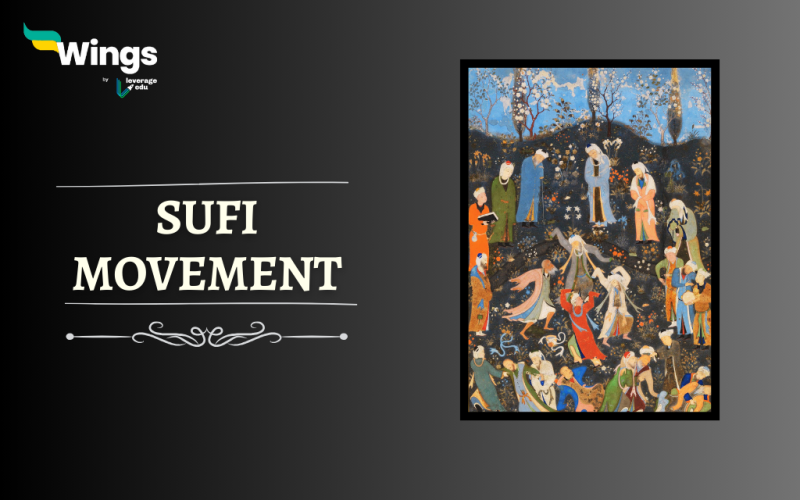Sufism emphasizes the inner, spiritual aspect of Islam, seeking to attain a direct experience of the divine. The Sufis believe in the unity of all religions and embrace the concept of “Ihsan,” which means excellence in faith and actions. They strive to cultivate a deep connection with God through various practices, including meditation, chanting, and dancing.
India with its rich cultural and religious diversity, has been a spiritual hub for centuries. One of the spiritual paths was the spread of Sufism in India. Sufism is a mystical branch of Islam that has deep roots in India and has had a significant influence on its culture and society. They believed in the practice of searching for God by taking a spiritual path and ultimately getting rid of materialism and its world. Sufism found its way into India during the medieval period with the arrival of Muslim Sufi saints. These saints, known as “Sufi masters,” travelled from different parts of the Islamic world, spreading their teachings and establishing a network of spiritual centres. In this article, we will explore the history, features, and impact of the Sufi Movement.
Table of Contents
History of the Sufi Movement
The term “ Sufi” is believed to have been derived from the word “Suf”, an Arabic word meaning” one who wears wool”. However, there is another interpretation of the term “Safa” which means “purity” in Arabic.
- At the beginning of the 12th AD, some people from Persia are believed to have taken the path of asceticism because of the rising materialism of the Caliphate.
- These people were believed to be the “Sufis”
- In India, the Sufi Movement started in 1300 AD and came to South India by the 15th century.
- Sufism is the mystical branch of Islam and Sufis represent the inner side of the Islam creed i.e (tasawwuf)
- Tasawuf was the name given to mysticism in Islam.
- The Arabic word Sufi in English means” Wool” and the people who wore these long Woolen clothes were called Sufis.
- The orders were mainly divided into two : Ba-sara– Those who followed Islamic Law and Be-shara – Those who were more liberal.
- Within Islam, the movement was a liberal reform movement and stressed that in the realization of God the elements like Love and Devotion.
- The basis of the movement was Pir-Murid, a teacher-student relationship.
- Sufism rose to prominence from the doctrine of Wahadut-ul-Wajud meaning unity of being, which was a concept by Ibn-ul-Arabi (1165-1240 AD).
- Rabia and Mansur bin Hallal were some early Sufi saints.
- In Sufism, self-discipline was one of the essential conditions to gain knowledge and understand God.
- Sufis laid stress on inner purity, while, orthodox Muslims emphasised on external conduct.
- Al-Hujwari was the first Sufis who resided in India and was also famously known as Data Ganj Naksh means Distributor of ultimate treasure and died in 1089 AD.
- Punjab and Multan were the early centres of the spread of Sufism in India, which later spread to Bihar, Kashmir, Bengal and the Deccan region.
Also Read – Wahabi Movement: History, Objectives & Impact
Characteristics of Sufism
Some essential characteristics of Sufism are –
| Sufi Terms | Meaning |
| Insan-e-Kamil | A perfect human with all good virtues |
| Murid | Followers |
| Sufi, Murshid, Pir | Saint |
| Khalifa | Disciples |
| Zikr-tauba | Recitation of God’s name at all times |
| Wahadatul-wazudi | One god for the entire universe; unity of god and being. |
| Fana | The spiritual merger of the devotee with God |
| Khanqah | Place where Sufis lived, hospices |
| Sama | Spiritual dance and music to promote their concepts. |
| Tauba | Repentance |
| Urs | Death |
Stages of Sufism
The stages of Sufism that developed over time are –
| Stages | Name | Period | Character |
| 1st Stage | Khanqah | 10th century | Also named the Age of Golden Mysticism |
| 2nd Stage | Tariqa | 11-14th century | Sufism was being institutionalized. Customs and logos became affixed. |
| 3rd Stage | Tarifa | After 15th century | The Sufi Movement became popular worldwide. |
Features of Sufism
One of the distinct features of Sufism is the importance it places on the guidance of a spiritual teacher or “Murshid.” The Murshid serves as a mentor, guiding the Sufi aspirant on the path towards spiritual realization. The bond between the Murshid and the disciple is based on love and trust, and the transfer of spiritual energy from the Murshid to the disciple is a vital aspect of the Sufi tradition. Some other important features of Sufism are –
- The Sufis rejected the elaborate rituals and codes of behaviour demanded by the Muslim religious scholars.
- Sufis believed that God is Mashuq and the Sufis are Ashiqs.
- Among these Sufi saints, the four most popular saints were Chistis, Suhrawadis, Qadiriyahs and Naqshbandis.
- Silsila worked as the continuous link between Murshid (teacher) and Murid (student). They lived in Khanqah’s, a hospice of worship.
- Names of the various Sisilas were based on who founded them. E.g – Chisti Sisila was founded by Kwaja Abdul Chisti.
- Sufism exercised great social, political and cultural influence and reached masses in the roots of both rural and urban areas.
- The movement discarded any caste system
- For them devotion is more important than Roza(fast) or Namaz (prayer)
- The concept of Sufism was extensively from the Hindu philosophical school of Vedanta
- They were divided into twelve Orders or Silsilas. Each of them was under the guidance of a mystic Sufi saint.
- The Cardinal Doctrines of Sufism were – 1. Complete surrender to the will of God and 2. Annihilation of the self, becoming a perfect person.
- These three doctrines of principles altogether comprise the Doctrine of Fana which means the annihilation of human attributes through the union of God.
- In Sufism, a perfect being is attributed with the title of Wali( Saint) which literally means “sincere friend”.
Also Read- 100+ Rumi Quotes on Love, Life, Nature & the Universe
Important Silsila/Orders of Sufi
The four main Silsila that were most popular are –
| Chisti Silsila | Founder was Kwaja Abdul Chisti |
| Originated in the Central Asia and Persian region | |
| Moinuddin Chisti introduced the Chisti order of Sufi in India. | |
| One of the disciples of Moinuddin was Baba Farid (Fariduddin Ganjshakar) whose poems are also included in Guru Granth Sahib. | |
| Due to yogi breathing exercises, Nizamuddin Auliya was called the perfect or Sidh Saint | |
| Sama was mostly practised in the Silsila | |
| Belonged to Ba-sharia | |
| Suhrawadi Silsila | Founder was Shaikh Shihabuddin Suhrawadi |
| The main centre of this Silsila was Multan | |
| These saints were rich and had good hold over administrative positions at the central government. | |
| One famous saint of this Silsila was Bahauddin Zachariah | |
| They belonged to Ba-sharia | |
| Nakshabadi Silsila | Founder was Baba-ud-Din Naqshband Bukhari |
| Khwaja Pir Mohammad was the pioneer to introduce the Silsila during the reign of Emperor Akbar | |
| They were an Orthodox Sect | |
| They opposed Sama | |
| The saints practised the Silent meditation of heart and hence were called “Silent Sufis” | |
| Qadri Silsila | The founders were Sheikh Abdul Qadir and his sons, Sheikh Niamatullah, Mukhdum Muhammad Jilani and Miyan Mir |
| Another great saint of the Silsila was Shah Badakhshani. | |
| Their main functioning was in the Punjab region | |
| They believed in Wahadat-al-Waood which means Unity of Existence or Unity of Being. |
Impact of the Sufi Movement in India
Sufism has had a profound impact on Indian society. It contributed to the syncretic nature of Indian culture, blending Islamic teachings with local traditions and practices. The Sufi saints, through their teachings and actions, spread the message of love, peace, and tolerance.
One notable aspect of Sufism in India is its influence on music and poetry. Sufi music, known as “Qawwali,” is a devotional form of music that touches the hearts of millions. The soul-stirring melodies and poetic lyrics express the longing for the divine and serve as a medium to connect with God. These saints are also credited for the invention Sitar and Tabla.
Fun Fact – Amir Khusrau was the disciple of Nizamuddin Auliya.
He was also called the “ Parrot of India” and the “ Father of Qawwali”
Furthermore, Sufism in India played a crucial role in social upliftment and welfare activities. Many Sufi saints dedicated their lives to serving humanity and alleviating the suffering of the poor and marginalized. The Sufi Khanqahs served as centres for social gatherings, where people from all walks of life came together to seek solace and support.
Sufism in India has evolved into a unique and vibrant spiritual tradition. Its teachings of love, peace, and unity have transcended religious boundaries and continue to inspire millions. The impact of Sufism can be seen in the arts, music, poetry, and social welfare activities that have flourished under its influence.
Relevant Blogs
That’s all about the Sufi Movement! If you want to know more about topics like this, then visit our general knowledge page! Alternatively, you can also read our blog on general knowledge for competitive exams!
 One app for all your study abroad needs
One app for all your study abroad needs













